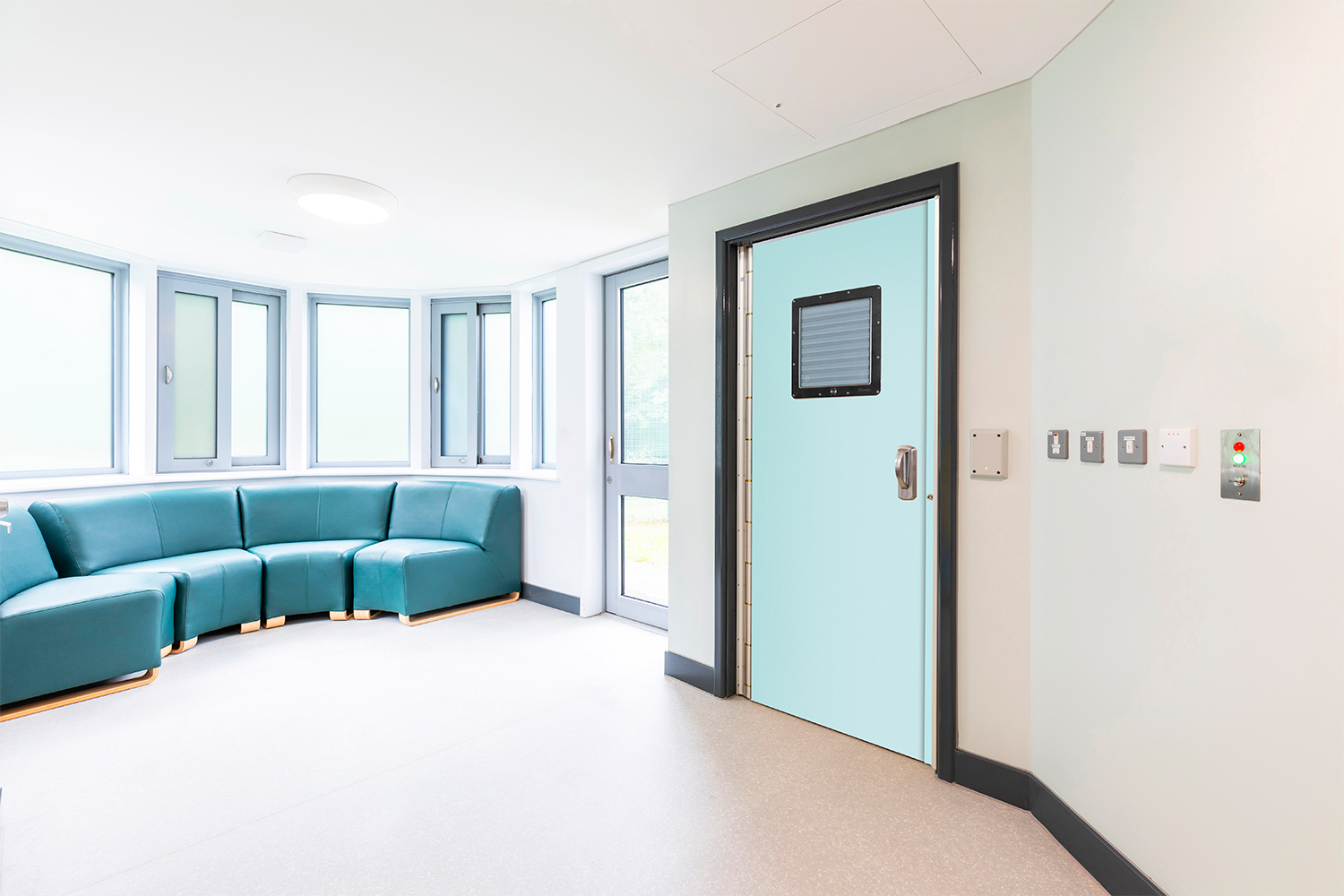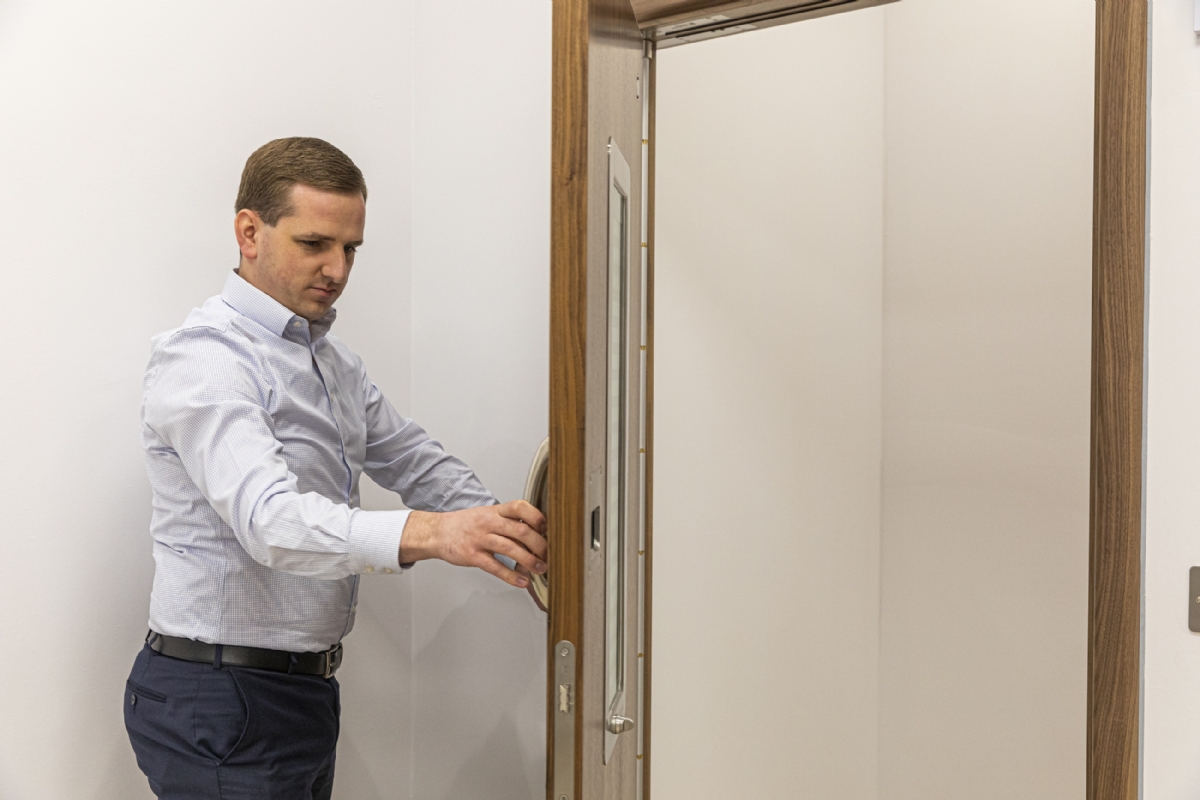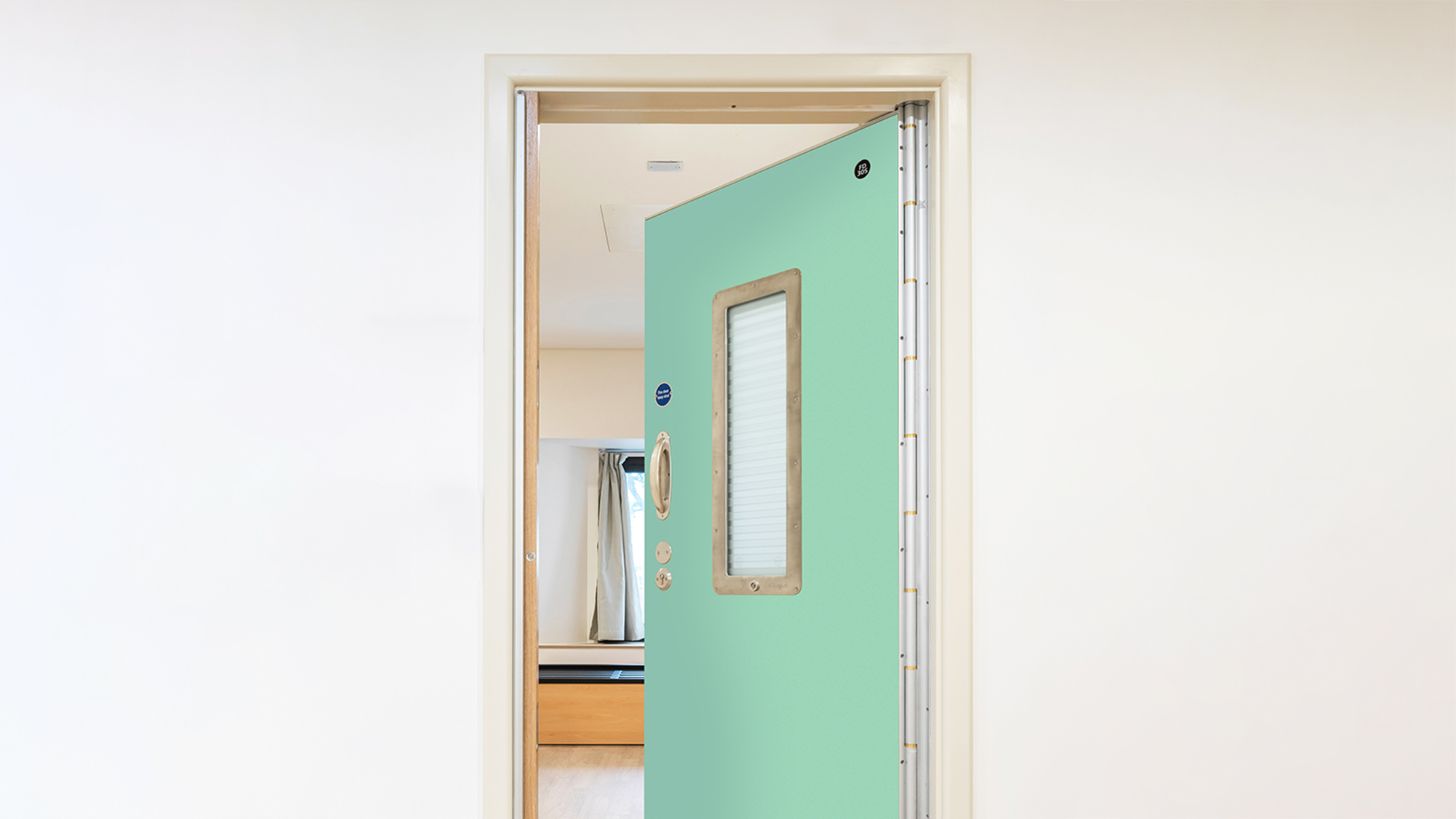What is an 'anti-barricade' door?
In behavioral health facilities and psychiatric units, it is critical that staff can gain access to patient rooms during emergency situations.
In an attempt to prevent staff entry, it is common for patients to barricade a door by wedging items into the edges or hinge, by placing heavy items such as furniture up against the door, or by using their own strength. Our Anti-Barricade Door Systems ensure the door can open outwards freely, away from the barricade, allowing staff to swiftly gain access and minimize the risk of self-harm or suicide.


Are anti-barricade doors important in behavioral healthcare settings?
If a vulnerable patient successfully barricades a door, such as their bedroom door, they will prevent staff from entering the room. In this situation, staff would be unable to intervene in any attempts by the patient to self-harm.
It is therefore critical that the possibility of this situation is designed-out of the physical environment in behavioral health facilities and other challenging settings, and it should be ensured that any doors are capable of opening outwards in an emergency situation.

What anti-barricade doors are available?
While an anti-barricade door must be able to open outwards, the capability of opening inwards during normal operation is a crucial factor in contributing to a patient’s recovery journey, the use of inward opening, single-leaf doors is considered to be more conducive to a homely, less institutionalized environment.
Our range of Anti-Barricade Door Systems are double-action by design, meaning that they can open both inwards and outwards. This helps create a more therapeutic space for the patient in normal operation while ensuring that the outwards-opening capability is there when required in an emergency.
View our Anti-Barricade Doors
Overcome barricade incidents in under 2 seconds
During emergency situations in behavioral health facilities and challenging environments, it is imperative for staff to be able to overcome any patient barricade attempts quickly. Our anti-barricade door systems are designed to make this both possible and achievable during emergency incidents, with our SWITCH and SWING anti-barricade doors allowing entry during barricading incidents in under 2 seconds through user-friendly design.
As your partner in patient safety, at Kingsway Group we also provide full training on our anti-barricade door systems to any member of staff who will need to operate the doors. Through user-friendly design and staff training, our anti-barricade doors become an integral piece of technology within a clinical team’s risk management plan.

Minimizing ligature risk
A study carried out in 2018 found that hanging was the most common method of inpatient suicide in the United States, accounting for 70.5% of all inpatient suicide events. Of these suicides by hanging, 53.8% used a door as a ligature point. Further, 90% of inpatient suicides took place in private spaces such as the bedroom, bathroom or shower.
When designing or considering the use of an anti-barricade doorset, it is therefore important to not give rise to new risks, such as the risk of ligature attempts. Our Anti-Barricade Door Systems are ligature-resistant by design, benefitting from our expertise in ligature-resistant best practices gained in over 10,000 risk-reducing projects across the globe.
Browse our Anti-Barricade DoorsLearn more about our Anti-Barricade Doors
The best ideas start as conversations. To learn more about how our anti-barricade solutions can help you improve patient and staff safety, reach out to a member of our team today.
